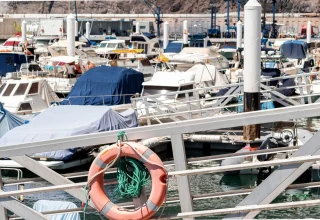Synthetic grass is not new. It rose to fame in the 1960s and gained the now-famous name ‘astroturf’. Of course, it changed and improved since then and most synthetic grass from that period has been replaced with more recent versions which do the job more efficiently.
There are, undoubtedly, many benefits to using synthetic grass. For example, it looks great all year round, it needs virtually no maintenance, and it lasts for years. However, that doesn’t mean it’s suitable for every environment. It’s not recommended that you put synthetic grass on your driveway and a rubber playground floor is still the best option for anywhere with children’s play equipment.
Factors Influencing Longevity
There is no simple answer to the longevity of your synthetic grass. T can easily last twenty years or more. But, it’s dependent on the quality of the grass you’ve chosen.
Plastic
There are many different options when making artificial grass. The cheapest versions are generally made from plastic which may start to fade in just a couple of years. In contrast, the high-end plastics are completely synthetic and will last for many years. But, they’ll cost you significantly more to purchase and install.
Sun Protection
Synthetic grass is in direct sunlight virtually all the time. Most manufacturers add a UV blocker to the material to prevent it from fading too quickly. This is why the cheapest brands will fade the fastest. But, when deciding which synthetic grass to buy you’ll need to consider the amount of sunshine you have.
The stronger the sunshine the better the protection needs to be. That is unless you like the faded look on your front lawn.
Installation Makes A Difference
To install synthetic grass you need to dig the existing garden to remove the grass and create a firm and level base. You may also need to fit weed fabric and you’ll want to make sure that water drains away quickly and efficiently.
If your synthetic grass is installed properly it will last for years. But, if you install it badly it will suffer from water damage and may even come loose. That will shorten its lifespan.
Maintenance
A final factor to consider is maintenance. While synthetic grass needs very little maintenance, it does need some. The main things that need to be done are raking it occasionally to remove debris and ensure that compacted areas are restored. Compacted areas occur when people walk over them a lot.
You also need to rinse it to remove products that shouldn’t be on your grass. Regular maintenance will help your synthetic grass to stay looking good and last for longer.
Choosing Synthetic Grass
If you’re not keen on cutting the grass every other week but like the look of it then you need to consider synthetic grass. It’s much easier to look after and maintain than real grass but still creates the same effect. It’s suitable for any location and worth investing in.











